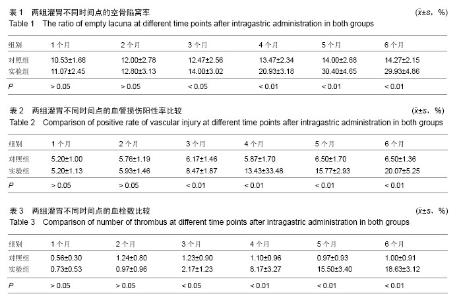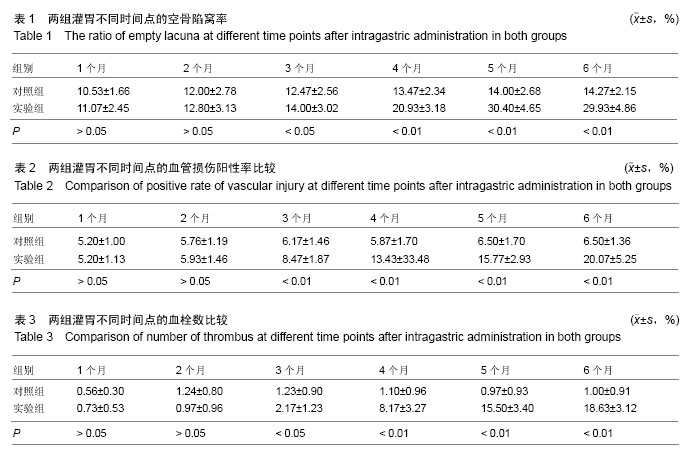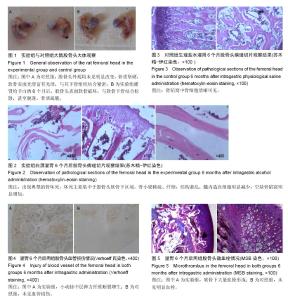| [1] Takano-Murakami R,Tokunaga K,Kondo N,et al.Glucocorticoid inhibits bone regeneration after osteonecrosis of the femoral head in aged female rats.Tohoku J Exp Med.2009;217(1): 51-58.
[2] Biswal S,Hazra S,Yun HH,et al.Transtrochanteric rotational osteotomy for nontraumatic osteonecrosis of the femoral head in young adults. Clin Orthop Relat Res. 2009;467(6):1529-1537.
[3] Korompilias AV,Lykissas MG,Beris AE,et al. Vascularised fibular graft in the management of femoral head osteonecrosis: twenty years later. J Bone Joint Surg Br.2009;91(3):287-293.
[4] 黄健,刘万林,郭文通.激素性骨坏死骨内微循环损害的研究及进展[J].内蒙古医学杂志,2008,40(5):574-577.
[5] 马玉霞,张兵,王惠君,等.饮酒行为对我国9省成年居民高血压患病的影响研究[J].中国慢性病控制与预防,2011, 19(1):9-12.
[6] 李子荣.科学诊断和治疗股骨头坏死[J].中国修复重建外科杂志,2005,19(9):685-686.
[7] Mont MA,Jones LC,Hungerford DS.Nontraumatic osteonecrosis of the femoral head: Ten years later.J Bone Joint Surg Am.2006;88(5):1117-1132.
[8] 裴福兴.加强基础与临床研究,努力提高我国股骨头坏死总体诊治水平[J].中华骨科杂志,2010,30(1):3-5.
[9] Drescher W,Pufe T,Smeets R,et al.Avascular necrosis of the hip-diagnosis and treatment.Z Orthop Unfall. 2011;149(2):231-240.
[10] Tan H,Yang B,Duan X,et al.The promotion of the vascularization of decalcified bone matrix in vivo by rabbit bone marrow mononuclear cell-derived endothelial cells. Biomaterials.2009;30(21):3560-3566.
[11] Kitajima M,Shigematsu M,Oqawa K,et al.Effects of glucocorticoid on adipocyte size in human bone marrow.Med Mol Morphol.2007;40(3):150-156.
[12] Conradie MM,de Wet H,Kotze DD,et al.Vanadate prevents glucocorticoid-induced apoptosis of osteoblasts in vitro and osteocytes in vivo.J Endocrinol. 2007;195(2):229-240.
[13] Conzemius MG,Brown TD,Zhang Y,et al. A new animal model of femoral head osteonecrosis: one that progresses to human-like mechanical failure.J Orthop Res.2002;20(2):303-309.
[14] Solomon L,Schnitzler H,Seftel H,et al.Alcoholicb osteonnecrosis :an attempted experimental model in the adult rat.Othop Clin North Am.1984;24:238-242 .
[15] 王义生,毛克亚,李月白.酒精性股骨头缺血坏死发病机理的实验研究[J].中华骨科杂志,1998,18(4):231-233.
[16] 齐振熙,喻灿明.酒精性股骨头缺血性坏死的动物模型研究[J].福建中医学院学报,2005,15(2):35-36.
[17] 范猛,姜文学,汪爱媛,等.局部注射无水乙醇建立鸸鹋股骨头坏死模型观察[J].中国医学科学院学报,2014,36(4): 357-362.
[18] 徐晓良,同志勤,王坤正,等.bBMP/胶原/珊瑚复合人工骨修复股骨头骨缺损实验研究[J].骨与关节损伤杂志,2000, 15(3):209-211.
[19] 朱肖奇,郭浩.酸性成纤维细胞因子/部分脱蛋白骨修复兔早期股骨头缺血性坏死的血管化作用[J].中国组织工程研究与临床康复,2009,13(8):7469-7473.
[20] Saito S,Inoue A,Ono k,et al.Intramedullary haemorrhage as a possible cause of avascular necrosis of the femoral head. The histology of 16 femoral heads at the silent stage.J Bone Joint Surg Br.1987;69(3):346-351.
[21] Van der Zee PM,Biro E,Ko Y,et al.P-Selectin -and CD63- exposing platelet microparticles reflect platelet activation in peripheral arterial disease and myocardial infarction.Clin Chem.2006;52(4):657-664.
[22] Wills TB,Wardrop KJ,Meyers KM. Detection of activated platelets in canine blood by use of flow cytometry. Am J Vet Res.2006;67(1):56-63.
[23] Imhof H,Sulzbacher I,Grampp S,et al.Subchondral bone and cartilage disease:a rediscovered functional unit.Invest Radiol.2000;35(10):581-588.
[24] 马信龙,孙智超,马剑雄,等.改良型大鼠激素性股骨头坏死模型建立及相关评价[J].实用骨科杂志,2009,15(10): 760-763.
[25] 王义生,窦凌峰.骨坏死动物模型研究进展[J].河南医学研究,2008,17(3):252-261. |



